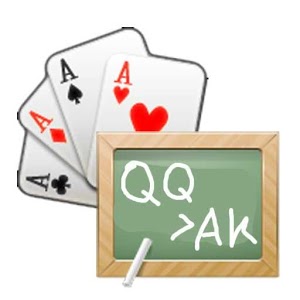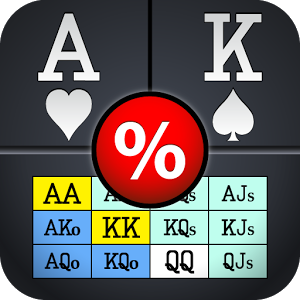When and when not to do so Editor’s note: This column is an excerpt from the, expanded edition of Internet Texas Hold’em: Winning Strategies for Full-Ring and Short-Handed Games. It includes a new chapter on playing multiway pots, as well as two new chapters for shorthanded games.
Beginning players, and even some players with a decent amount of experience, have misconceptions concerning when they should raise and when they should call with a draw.
Most players understand that they should raise with the best hand; what they don’t understand is how to define the best hand. The best hand is simply the hand that has the highest chance of winning by the river; this can be either a very strong made hand on the flop or a very strong draw.
Key Concept: When the probability that you will win is higher than the percentage of bets you are contributing to the pot, you usually should choose the strategy that will get as many bets in the pot as possible.
The player with the best made hand on the flop doesn’t always have the best chance of winning by the river. For example, your opponent holds the A 10
10



















































Let’s look at another example: You hold the K






























Now let’s assume that in the same hand above, you are up against a lone opponent – a rock who never bets unless he has at least top pair. You still have about a 33 percent chance of winning the hand, but you’ll be contributing 50 percent of the bets in the pot. Realize that you will still draw, since the amount of money already in the pot gives you good pot odds, but unless you are trying to buy a free card, raising the flop would only help your opponent.
We can make some generalizations about raising draws for value. With 15 outs, you have a better than 50 percent chance of improving your hand by the river. Therefore, each bet that goes into the pot against a lone opponent has a slightly positive expectation. If you have 15 outs against two or more opponents, you earn a lot of positive expectation for each bet that goes into the pot on the flop.
When you have eight or nine outs, such as open-end straight draws or flush draws, you are about 2-to-1 against improving by the river. Therefore, you are indifferent against two opponents. Against one opponent, you would prefer to minimize the number of bets. Against three or more opponents, you would prefer to maximize the number of bets.
With 11 or 12 outs, such as a straight or flush draw with an overcard, you would show a profit against two or more opponents and would have a small negative expectation against a lone opponent.
The following table summarizes your strategy depending on the situation. “Maximize” refers to a strategy to maximize the number of bets going into the pot, while “Minimize” refers to a strategy to minimize the bets you put into the pot. Note that this table refers to flop play only. All draws decrease significantly in value on the turn.


Once you decide that it is to your advantage to maximize or minimize the number of bets, the question becomes how you should do so. With big draws, it is usually to your benefit to keep as many opponents in the pot as possible (one exception is when the pot is so large that you want to drive out opponents to give yourself some other outs, such as making your overcards good). Therefore, if you want to keep opponents in the hand, you need to be careful when you raise. For example, if the small blind bets and you are in early position with several players left to act behind you, calling is most likely the best strategy, as you do not want to force the remaining opponents out of the pot. You also might be careful about betting into a preflop raiser with several opponents yet to act behind him, since you risk him raising and driving out the remaining players.
However, if several opponents have already called, you can consider raising to get them to add another bet to the pot. When you act early, a smart play is to try for a check-raise. This is especially true when the preflop raiser acts immediately after you.
In terms of minimizing the number of bets, there are only two strategies. The first is obvious: simply call. Another strategy might be to raise, hoping to receive a free card on the turn. This can be risky, however, depending on the situation and opponent(s).
Other Reasons to Raise Drawing Hands
Note that the discussion above relates only to how to play draws for value. As always in poker, there are other considerations when determining how to play your hand, especially when you are indifferent based on your hand’s value.
One obvious situation is trying to buy a free card on the turn by raising the flop while in late position. It might not work, but as long as your hand is “indifferent” to the number of bets going into the pot, you don’t lose anything by trying.
Semibluffing is another obvious situation, especially against a lone opponent. If there are scenarios in which you might be able to get your opponent(s) to fold, taking the aggressive line can often be better than simply playing passively, hoping to hit your draw.
When there are still opponents left to act behind you, you might get a player to fold a hand that blocks some of your outs, and even if he does call, it is OK from a value standpoint.
As always in poker, there are many considerations in every decision, but fundamentally, you always should start with the value of your draw compared to the number of opponents you face.
Submit your review | |







